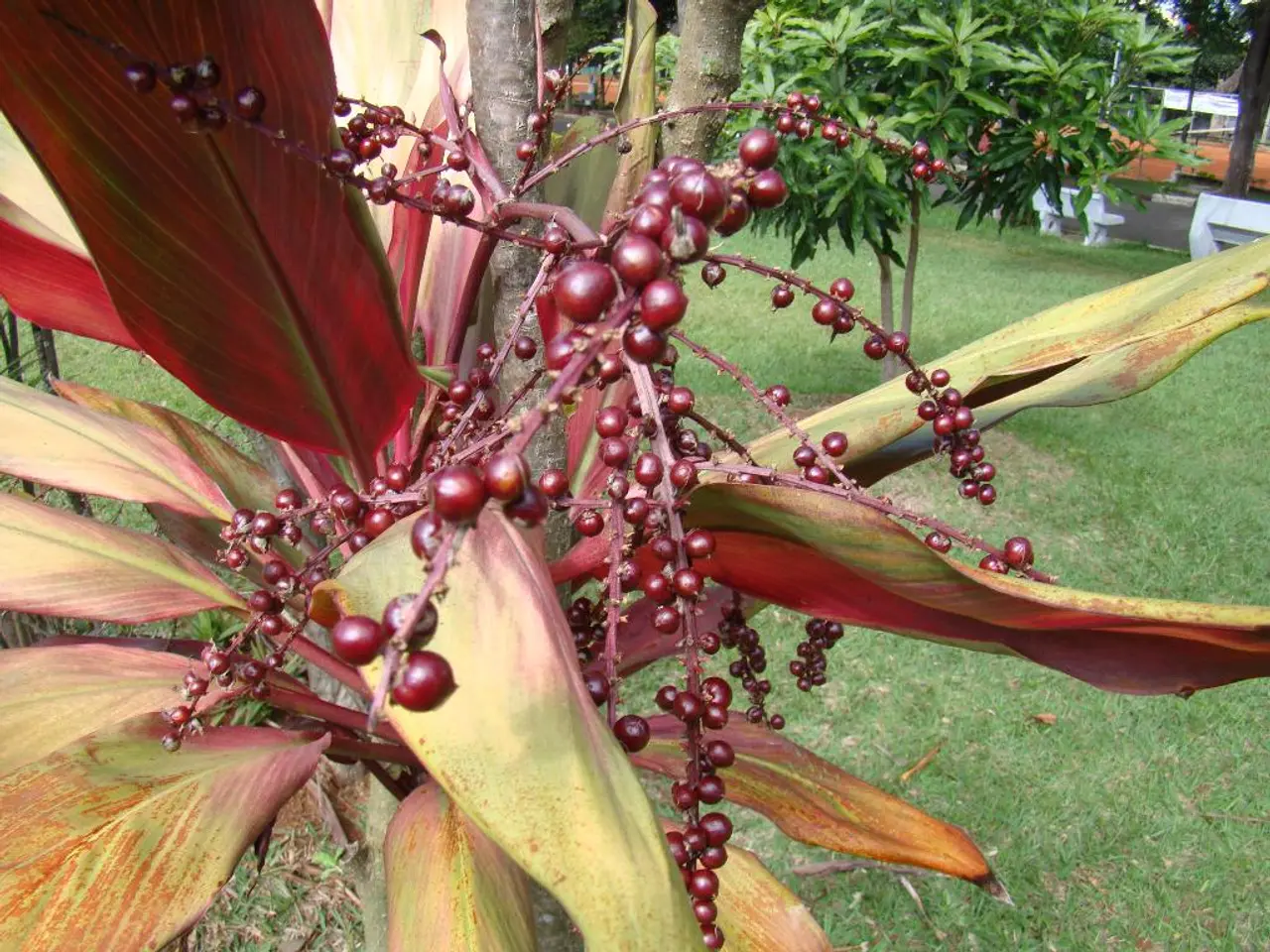Wild Bush Plum, Also Known as Conkerberry, Offers Hardiness and Promising Opportunities for Indian Agriculture
In the heart of tropical and subtropical regions, a hardy, spiny evergreen shrub known by various local names - Vakkay, Jungle Karonda, Kair, or Conkerberry - has been garnering attention for its medicinal qualities and sustainable farming practices. This shrub, scientifically named Carissa carandas, offers numerous benefits to farmers, livestock, and the environment.
Medicinal Uses and Benefits
Rich in vitamin C, antioxidants, and minerals like iron, Karonda boosts immunity, aids heart health, and promotes overall vitality[1][4]. Its high dietary fiber content supports healthy digestion, regular bowel movements, and gut flora balance[1][2][4]. With a low glycemic index, it helps regulate blood sugar levels, making it beneficial for diabetic individuals under medical guidance[1][2].
Karonda's anti-inflammatory and antimicrobial properties are utilised in Ayurveda and traditional medicine for treating respiratory infections, skin ailments, and wound healing[2][5]. The antioxidants in Karonda combat free radicals, helping prevent skin aging and promoting a healthier complexion[1].
Farming Practices and Cultivation
Growing 2-3 meters tall, Karonda thrives in well-drained soils, tolerates drought, and requires moderate watering[2]. It produces white, star-shaped flowers followed by round, fleshy fruits that ripen from green to dark purple or black[2]. Sustainable harvesting and eco-friendly sourcing are encouraged, with government initiatives supporting quality standards and market access for farmers cultivating Karonda[2].
The fruit is harvested for fresh consumption, pickling, chutney making, drying, and industrial uses like jams, jellies, and herbal remedies[3]. The plant's spiny nature mandates careful handling during cultivation and harvest.
Additional Notes
Culturally and religiously significant in parts of India, Karonda is used in rituals and symbolizes prosperity[2]. The fruit’s shelf life when dried or processed is extended, enhancing its economic value and usability in various products[3].
In addition to its medicinal uses, Karonda serves as a natural live fence for farmers, providing a barrier against stray animals and wild animals[6]. During times of fodder shortage, goats and sheep graze on the soft leaves and young shoots of Karonda[7].
In agroforestry and pasture land use, Karonda can cover abandoned land, suppress dust storms, and form shelterbelts, enhancing soil fertility and water availability[8]. Bush Plum is cultivated around fields by farmers to guard crops and provides shelter to birds and beneficial insects[9].
In its ability to restore degraded land, such as eroded, dry, or rocky areas, improve soil fertility, and water availability, Bush Plum proves to be a valuable asset for farmers and the environment alike[10].





